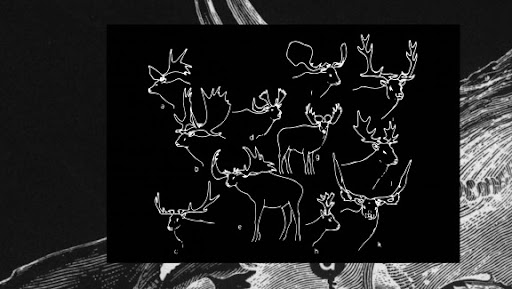Carys Manjdadria-Jenkins analyses the effect of Amanda Rice’s documentary on analogue media and animal extinction, The Flesh of Language.
The body of analogue media and its weakening, wearing, waning corpse. Once the emblem of the future, a technological longing for time; now likened to endangered animals and the skeletal remains of great organic life and matter. Amanda Rice, in seventeen minutes, draws a tentative link between media and the life we seek to transpose onto it, with the hope of eternal life through the pixels appearing as a fragile promise.
The world is moving too fast for its body to keep up, as the rules of nature exert their cruel natural selection over both animals and the analogue. Antlers appear as scientific data charts, beeps, boops and pixels cross the screen, the sound of silence as outdated machinery whirrs and winds up, backlogs of cassettes as fossils. Though each ebbs towards extinction, it is this fossilisation that suggests there’s something that still lives between the grooves of the vinyl.
Analogue media allows for the act of playing back a moment of time over and over again; allows for the extinct to be, briefly, recollected into existence. Plastics are made from crude oil, or the prehistoric organic matter of plants, bacteria, and fossils. The hum of a record is the hum of decades of death, ancestral patternings onto the plastic as we resurrect a life that no longer exists in our own timeline. People have long suspected life to exist within vinyl recordings.
The film is closed by another recording, that of a sceptic council’s analysis of the backwards play of Stairway to Heaven. Human mythology demands that the black discs contain subliminal messaging, be that of satanic origins, or the voice of a long gone species. Such species may dwindle to death, and analogue media may be forgotten and overrun by the ‘new’, but the link that Rice draws is a vehicle for traversing across time and sustaining existence through another plane of life.
The film’s Aphex-Twin-like stuttering structure creates a documentary collage that falls short only by its millennial use of sparkling eyeshadow dancing sultrily and interpretively. It is the adverse effects of Euphoria on our idea of poetic imagery, a testament to the natural selection of media that Rice recognises. Perhaps such surface level grabs at supposed artistry will also go the way of the dodo and the Sony Discman.




